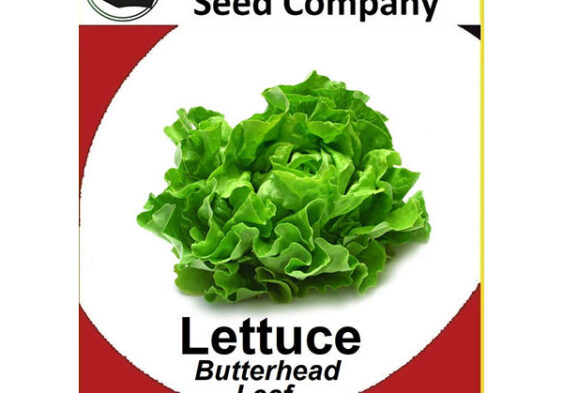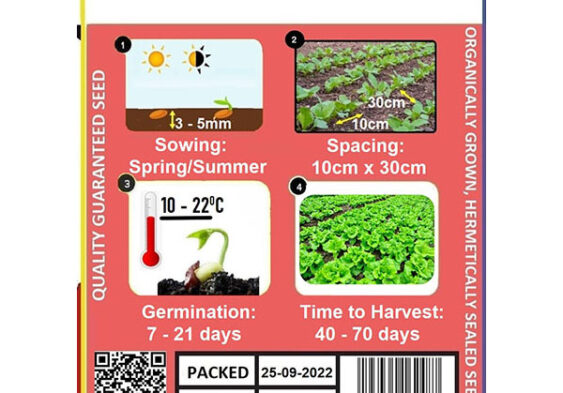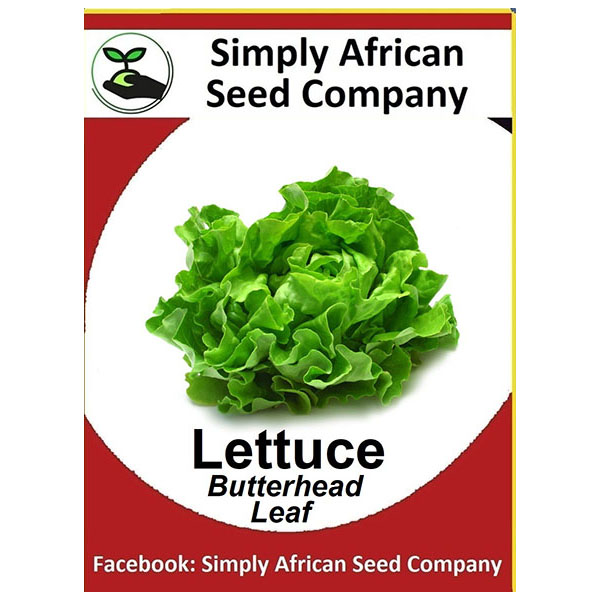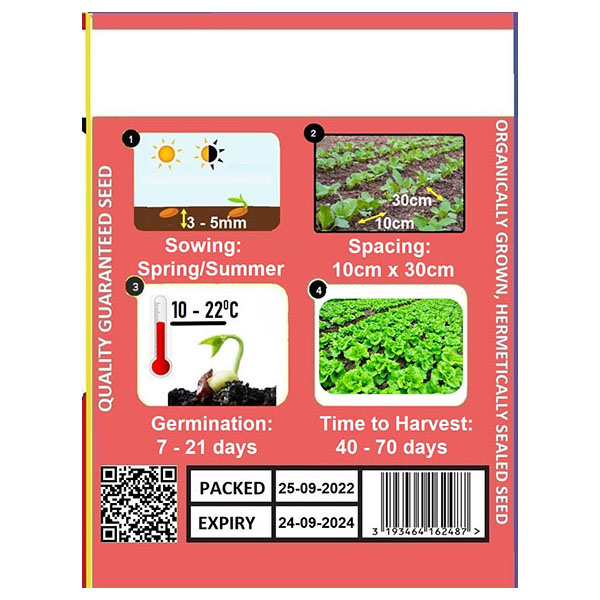Lettuce is tolerant of a wide range of soils but prefers well-drained, cool, loose soil with plentiful moisture and pH 6.2 to 6.8. To encourage tender and tasty growth, make sure the location is rich in organic compost matter. Amend prior to planting if needed.
Direct seed or transplant in early spring, as soon as you can work the soil. Prepare beds by working in manure or compost and raking smooth to leave a fine seedbed. Seeds need light to germinate; sow at a very shallow depth by covering with a thin layer of growing medium.
Direct seeding: Sow seed 2-3mm deep, 2.5cm apart in rows 30 to 45cm apart. When plants have two or three true leaves, thin to 30cm spacings for crisphead varieties, 15 to 25cm for other types. You can also lightly broadcast seed (particularly of looseleaf varieties) in a patch instead of a row.
Transplants: Sow in seed trays 3 to 4 weeks before transplanting outside. Harden seedlings for 3-5 days before transplanting.
- Germination: 7 to 14 days, 5°C to 30°C
- Soil: Well-drained
- Sunlight: Full sun, part shade
- Sow Seeds: 1 cm apart
- Transplant/Thin to: 15 – 25 cm apart
- Ave. Days to Harvest: 25 to 75
Good Companions: Asparagus, Beans, Beetroot, Cabbages, Carrots, Celery, Chicory, Cucumber, Dill, Fennel, Kohlrabi, Leeks, Mint, Onions, Peas, Pumpkins, Radish, Rhubarb, Strawberry, Sweetcorn, Tomatoes, Yarrow
Bad Companions: Parsley, Parsnip
Growing: Use row covers or cloches to protect very early plantings from cold, to protect young plants from insects, and (supported by hoops) to shade crops when warm weather arrives.
Make succession plantings every week or two, and grow several varieties with different maturity dates for a continuous supply. Moisture, stress, and high temperatures, particularly at night, encourage bolting. As the season progresses, plant more bolt-resistant varieties. Locate plants where they will be partially shaded by taller nearby plants, latticework, or another screen.
Mulch to retain moisture and to suppress weeds. Fertilizing can be helpful to promote faster growth, especially a fish emulsion type that is not high in nitrogen that can cause greens to become bitter. Water lightly but consistently.
Harvesting: Many varieties of lettuce can be harvested as microgreens, baby greens, leaves, or the entire plant. Ideally, greens should be collected early in the day, before the onset of midday sun, to prevent wilting.
Microgreens are usually harvested within 2 weeks after germination by cutting the entire plant just above the ground, once it is around 10cm tall.
Baby greens are harvested between 28 and 35 days after germination. Looseleaf, butterhead, and romaine types can typically be harvested as baby greens, while iceberg lettuce is not suitable as baby greens.
Mature leaves can be harvested from all types of lettuce, except for the iceberg, any time in the growing cycle, until a central stem begins to form. This indicates that the plant is preparing to bolt to seed and greens collected from such plants are often too bitter for consumption.
Entire plants can be harvested in mid-development while the leaves are still plump and tender, but before a stem has started to form. Many varieties of loose leaf lettuce can be harvested numerous times during a single growing season.
Some other general guidelines when harvesting the entire plant: Leaf lettuce can be cut as soon as it is large enough to use, usually in 50 to 60 days from planting. Cutting every other plant at the ground will give the remaining plants more space for growth.
To store lettuce, first, wash it well by immersing in water and swishing it around. Place it in a colander and rinse then drip dry. When it is dry, place it in a plastic bag in the refrigerator or wrap it in paper towels and place it in a bowl in the refrigerator. Avoid storing lettuce with apples, pears, or bananas as they release a natural ripening agent that will cause brown spots and the leaves will decay quickly.




